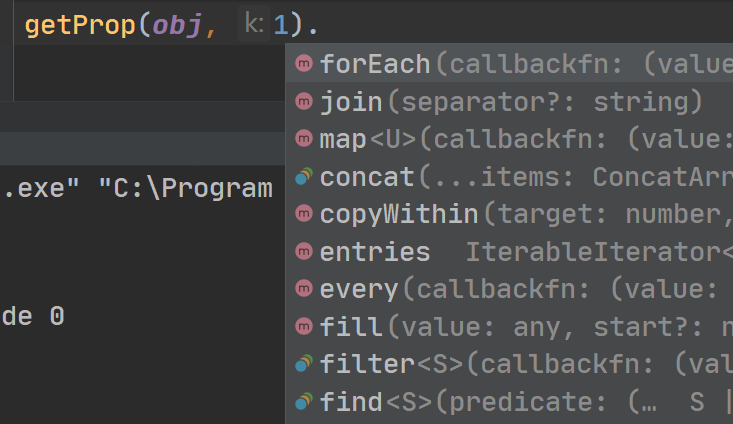ts, as a js with added type, is similar to java at first, but later I found that there are many differences
fib with type example
function fib(n: number): number { return n < 2 ? n : fib(n - 1) + fib(n - 2) } // 0,1,1,2,3,5,8,13,21,34 console.log([...Array(10)].map((_, k) => fib(k)).join(','))
When assigning literal value, there can be redundant attributes in the variable, but not literal value
type Stu = { name: String; age: Number } function f(s: Stu) { console.log(s.name, s.age) } f({ name: 'a', age: 2, score: 60 // Error reporting, more than attributes }) let s = { name: 'a', age: 2, score: 60 } f(s) // Can be called successfully

Closure counter
interface Counter { (): number count: number } function getCounter(): Counter { const c: Counter = (): number => c.count++ c.count = 0 return c } let c: Counter = getCounter() c() console.log(c.count) c() console.log(c.count) c() console.log(c.count)
One detail is that if you use let, you will report an error. You must use const

generic paradigm
function getM<T>(size: number, val: T): T[] { return Array(size).fill(val) } let m = getM(3, 0) console.log(m)


Generic constraints
function getProp<T, K extends keyof T>(obj: T, k: K) { return obj[k] } let obj = { 's': 'abc', 1: [] } getProp(obj, 's') getProp(obj, 1)


Boolean objects are always converted to true when they operate on Boolean values
let a = new Boolean(true) let b = new Boolean(false) let c = Boolean(true) let d = Boolean(false) console.log(a && b) // [Boolean: false] console.log(c && d) // false console.log(b && true) // true console.log(d && true) // false
The main difference between the common built-in object and the basic wrapper type is the life cycle of the object. Instances of reference types created with the new operator are always saved in memory before the execution flow leaves the current scope. The automatically created basic wrapper type objects only exist at the execution moment of a line of code, and are immediately destroyed. This means that we can no longer add properties and methods to the base wrapper type values at run time.
let s = "abc" s.name = 'a' console.log(s.name) // undefined